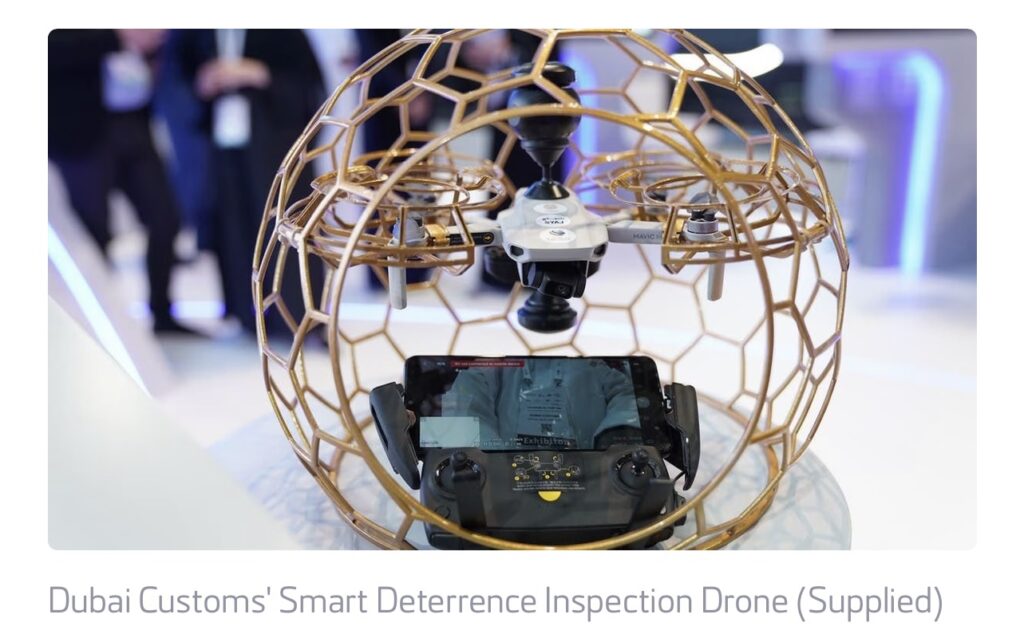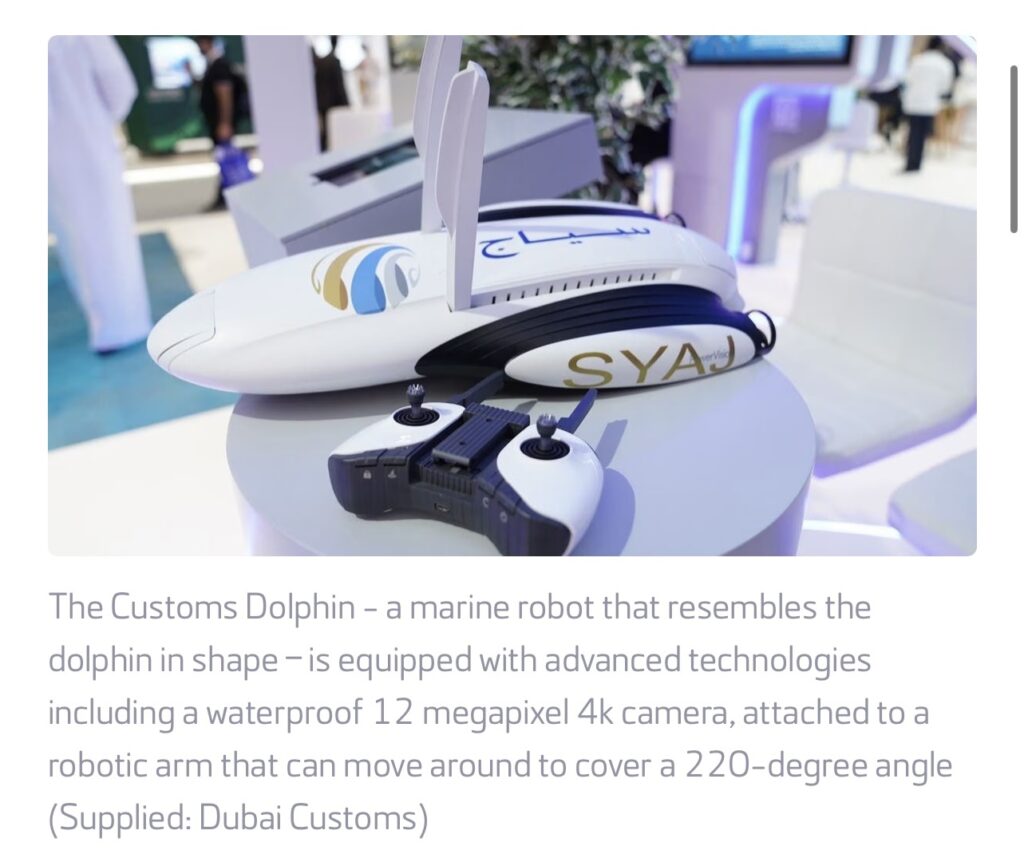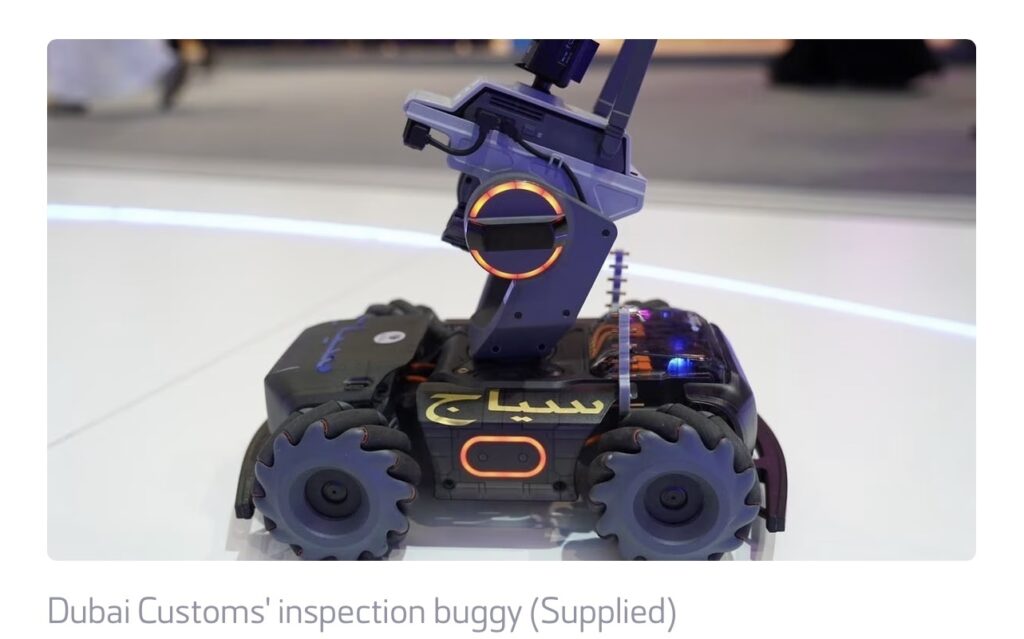Dubai Customs – The Innovator
From floating drones, underwater robots, predictive AI and an expansion in the Metaverse – Dubai Customs is embracing innovation as it steps up its mission to safeguard the UAE’s borders.
From the threat of smugglers to illegal trade, the Gulf city’s border control authority is using highly innovative technology to thwart criminal activity, while also making investments to streamline the shipment of goods coming in and out of the country.

Khalid al-Zarooni, head of innovation at Dubai Customs, said: “Innovation is a huge part of our mission at Dubai Customs to protect our society, to facilitate trade and to enhance the economy.”
“Innovation is one of our major values, along with of course, compliance and facilitation.”
A lot of the ideas, he said, has come from submissions made by employees within Dubai Customs.
“One of our strongest points in Dubai Customs is the culture that we’ve built here; the culture of innovation and the culture of motivation, where we always encourage our employees from all levels, from all nationalities to submit their improvement ideas, their developmental ideas, their innovative ideas.”

One such suggestion was the Dubai Customs Dolphin – a marine robot that resembles the dolphin in shape – equipped with advanced technologies including a waterproof 12-megapixel 4k camera attached to a robotic arm that can move around to cover a 220-degree angle.
The submarine can swim at a speed of 8 knots or 16 km/hour, record live videos and take high-resolution stills. It can also scan certain spots underwater with the help of GPS. Its range of control and streaming is around 1,000 meters.
Inspectors can control the customs dolphins remotely and send them to monitor marine vessels and their movements before they enter the port. This tech enables customs officials to detect any attempts made by the vessels to get rid of prohibited goods before they enter t
Another suggestion that turned into reality is the customs deterrence drone. This innovation is transforming previously challenging inspection procedures on traditional wooden dhow ships where smugglers apparently hide things in the bulkheads as well as in hidden compartments.
“We really hesitate to send inspectors, even our canine units – any organic life at all – to go down there when we do inspections for suspicious or dangerous goods,” al-Zarooni said.
Then, a member of Dubai Customs suggested a hovering drone.
“It’s a smart drone that we send into wooden dhow ships, which has traditionally posed a major challenge for us,” he said. “The conventional dhow ships that come to the creek, can present very dangerous situations especially in the cargo holds… the flooring is very unstable and sometimes there are dangerous toxins there.”
“Drone technology has reached such a level where the drone itself can be very stable midair,” said al-Zarooni. “The drone is almost unmovable, and it can be controlled by GPS. It can be fitted with various scanners and high-definition cameras.”

“So, we prototyped a drone and protected it with a cage. We sent it down into one of the cargo holes and it’s a very successful pilot test project and we’re going to be implementing that as part of our inspection procedures in the future.”
“Each inspector might have his own personal drone that he can send whenever he needs to inspect certain zones.”
This year, more new technology will be deployed as Dubai Customs continue deterring smugglers while simultaneously streamlining services for companies bringing trade in and out of the country, al-Zarooni said.
“We are trying to implement more AI into our procedures. For example, there’s something called robotic process automation, which speeds up certain declarations” on goods.
“We have a digital system now for declaration. This robotic process automation really harnesses the power of AI to speed up the declaration clearance and certain other operations when it comes to customers or clients declaring their items online.”
“We are also trying to implement AI in a way to understand our clients more. So, sort of an official recognition system which helps us understand their pain points.”
“AI can help with that through image analysis and facial recognition.”
To read the entire article, click here: Article
Source: AlarabyaNews
You must be logged in to post a comment.